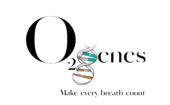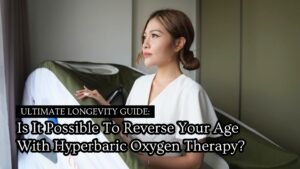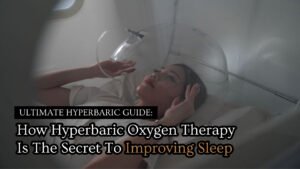This article discusses the potential benefits of Hyperbaric oxygen: B-level evidence in mild traumatic brain injury clinical trials and persistent post-concussion syndrome. It highlights the presence of B-level evidence supporting the effectiveness of HBOT in these conditions. The article also raises a crucial concern about the use of pressurized air controls in clinical trials and suggests that they may have therapeutic effects, making them unsuitable as sham controls. The study concludes that both hyperbaric oxygen and hyperbaric air have shown therapeutic effects on the mentioned symptoms, potentially alleviating post-traumatic stress disorder symptoms in brain injury patients. The use of pressurized air as a placebo in clinical trials is criticized for biasing results due to its biological activity favoring healing.
Objective: First, to demonstrate that B-level evidence exists for the use of hyperbaric oxygen therapy (HBOT) as an effective treatment in mild to moderate traumatic brain injury/persistent postconcussion syndrome (mTBI/PPCS). Second, to alert readers and researchers that currently used pressurized air controls (≥21% O2, >1.0 ATA) are therapeutically active and cannot be utilized as sham controls without further validation.
Method: Review of published, peer-reviewed articles of HBOT prospective and controlled clinical trials of mTBI/PPCS symptoms.
Results: Published results demonstrate that HBOT is effective in the treatment of mTBI/PPCS symptoms. Doses of oxygen that are applied at ≥21% O2 and at pressures of >1.0 ATA produce improvements from baseline measures. Some of the recently published clinical trials are mischaracterized as sham-controlled clinical trials (i.e., sham = 21% O2/1.2-1.3 ATA), but are best characterized as dose-varying (variation in oxygen concentration, pressure applied, or both) clinical trials.
Faqs
- What is hyperbaric oxygen therapy (HBOT)?
- HBOT is a medical treatment that involves inhaling pure oxygen in a pressurized chamber, typically at higher pressures than normal atmospheric conditions. It is used to treat various medical conditions, including traumatic brain injuries.
- What is “B-level evidence” in the context of clinical trials?
- B-level evidence suggests that there is moderate-quality research supporting the effectiveness of a treatment in clinical trials. It indicates that there is a reasonable level of confidence in the treatment’s efficacy.
- Can hyperbaric oxygen therapy be effective in treating mild traumatic brain injuries?
- The article suggests that there is B-level evidence supporting the effectiveness of hyperbaric oxygen therapy in treating mild traumatic brain injuries, specifically persistent post-concussion syndrome (mTBI/PPCS).
- What are the key findings of clinical trials related to hyperbaric oxygen therapy for mild traumatic brain injuries?
- The article discusses that clinical trials have demonstrated improvements in mTBI/PPCS symptoms with the application of hyperbaric oxygen therapy. It also raises concerns about the use of pressurized air controls in clinical trials.
- Why is the use of pressurized air controls in clinical trials problematic?
- According to the article, pressurized air controls are suggested to be therapeutically active and cannot be used as sham controls without further validation. This can bias the results of clinical trials.
- Are there any side effects or risks associated with hyperbaric oxygen therapy?
- While HBOT is generally considered safe, there can be side effects, including ear barotrauma, sinus pain, and temporary changes in vision. It’s important to consult with a healthcare provider before undergoing this treatment.
Conclusions
Hyperbaric oxygen and hyperbaric air have demonstrated therapeutic effects on mTBI/PPCS symptoms and can alleviate posttraumatic stress disorder symptoms secondary to a brain injury in 5 out of 5 peer-reviewed clinical trials. The current use of pressurized air (1.2-1.3 ATA) as a placebo or sham in clinical trials biases the results due to biological activity that favors healing.






